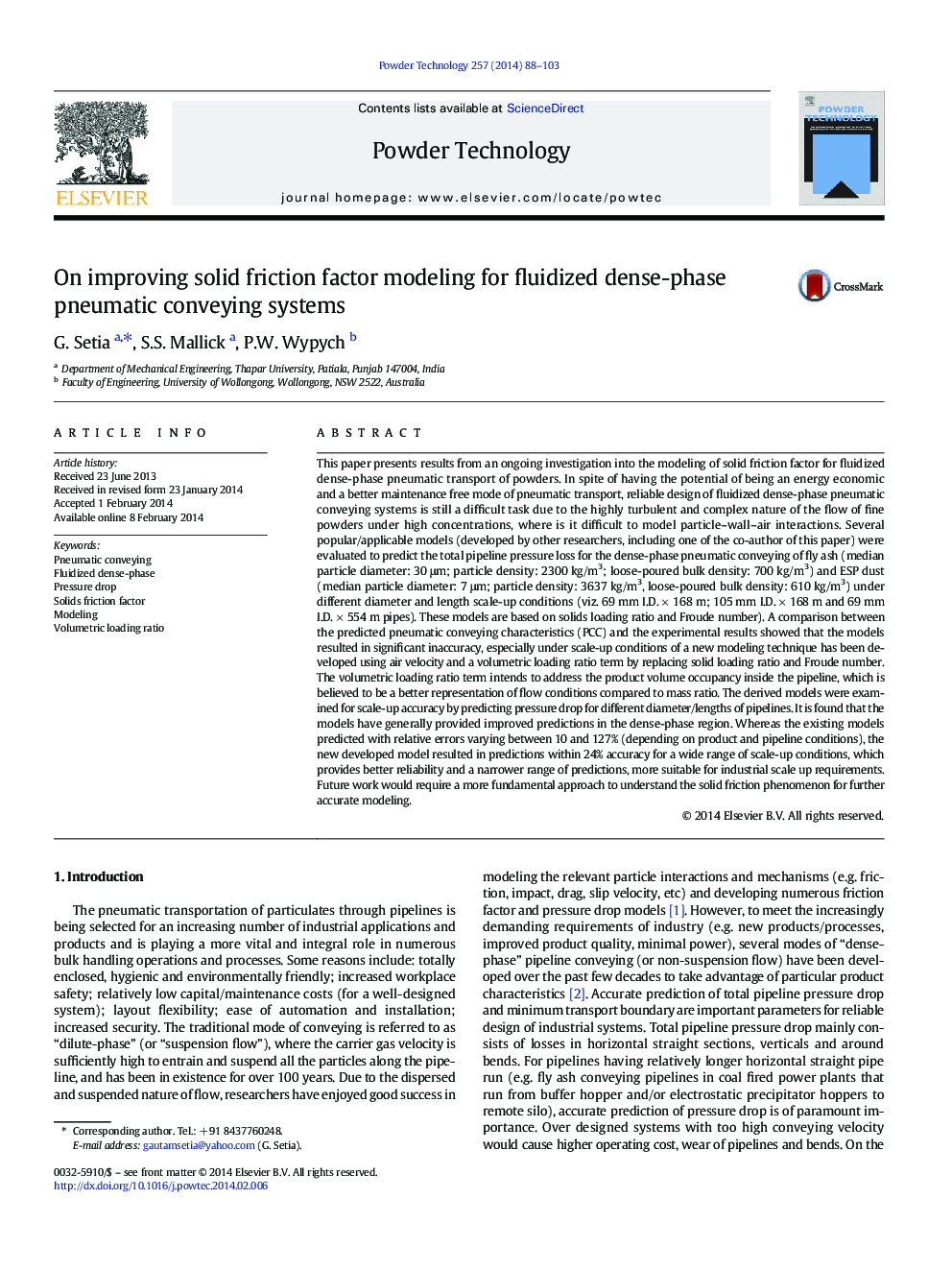| کد مقاله | کد نشریه | سال انتشار | مقاله انگلیسی | نسخه تمام متن |
|---|---|---|---|---|
| 236205 | 465665 | 2014 | 16 صفحه PDF | دانلود رایگان |
• Seven existing models of solids friction factors were evaluated.
• Existing models provide up to 127% inaccuracy for different test conditions.
• New model is developed using volumetric loading ratio and air velocity.
• Model includes representative voidage based on superficial air velocity.
• Scale-up validation of new model provides stable results (within 24% accuracy).
This paper presents results from an ongoing investigation into the modeling of solid friction factor for fluidized dense-phase pneumatic transport of powders. In spite of having the potential of being an energy economic and a better maintenance free mode of pneumatic transport, reliable design of fluidized dense-phase pneumatic conveying systems is still a difficult task due to the highly turbulent and complex nature of the flow of fine powders under high concentrations, where is it difficult to model particle–wall–air interactions. Several popular/applicable models (developed by other researchers, including one of the co-author of this paper) were evaluated to predict the total pipeline pressure loss for the dense-phase pneumatic conveying of fly ash (median particle diameter: 30 μm; particle density: 2300 kg/m3; loose-poured bulk density: 700 kg/m3) and ESP dust (median particle diameter: 7 μm; particle density: 3637 kg/m3, loose-poured bulk density: 610 kg/m3) under different diameter and length scale-up conditions (viz. 69 mm I.D. × 168 m; 105 mm I.D. × 168 m and 69 mm I.D. × 554 m pipes). These models are based on solids loading ratio and Froude number). A comparison between the predicted pneumatic conveying characteristics (PCC) and the experimental results showed that the models resulted in significant inaccuracy, especially under scale-up conditions of a new modeling technique has been developed using air velocity and a volumetric loading ratio term by replacing solid loading ratio and Froude number. The volumetric loading ratio term intends to address the product volume occupancy inside the pipeline, which is believed to be a better representation of flow conditions compared to mass ratio. The derived models were examined for scale-up accuracy by predicting pressure drop for different diameter/lengths of pipelines. It is found that the models have generally provided improved predictions in the dense-phase region. Whereas the existing models predicted with relative errors varying between 10 and 127% (depending on product and pipeline conditions), the new developed model resulted in predictions within 24% accuracy for a wide range of scale-up conditions, which provides better reliability and a narrower range of predictions, more suitable for industrial scale up requirements. Future work would require a more fundamental approach to understand the solid friction phenomenon for further accurate modeling.
Fig. Predicted versus experimental PCC, fly ash, 69 mm I.D. × 168 m pipe, ms = 19 t/h.Figure optionsDownload as PowerPoint slide
Journal: Powder Technology - Volume 257, May 2014, Pages 88–103
